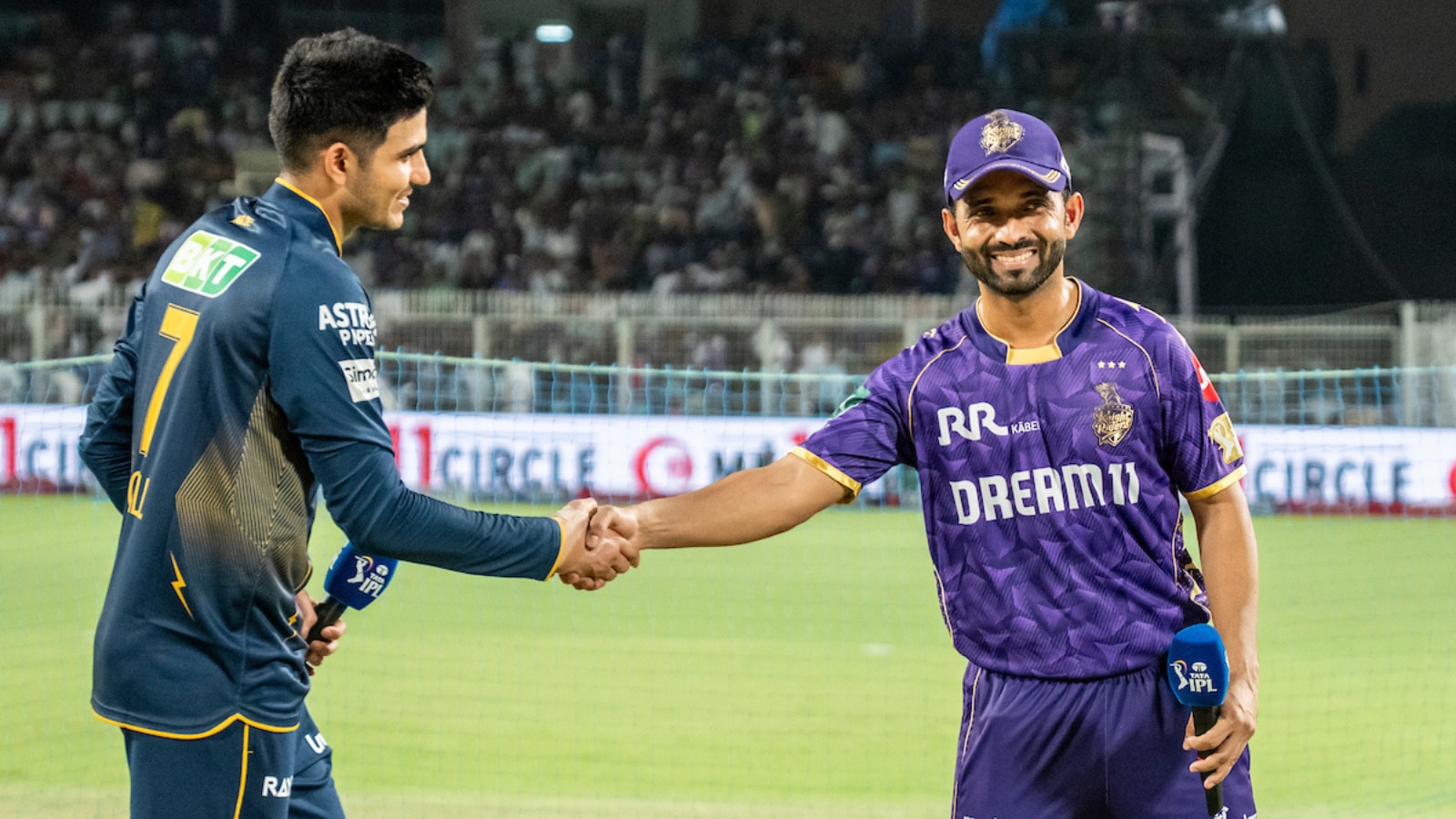Opinion | Jokes Apart: Why Post-Match Bonhomie Between Players Is The Best Part About IPL

The nicest thing about the IPL has nothing to do with the match itself. It’s what happens immediately after the match is over, in the brief period between the last ball bowled and the post-match presentation, which has so many people handing out prizes on behalf of the sponsors, that Ravi Shastri once said, tongue-firmly-in-cheek, “For the post-match presentation, we have an entire cricket team here.” I’m talking about the bonhomie between players from rival franchises, players who have just minutes earlier played an intensely close match. There is a pleasant bipolarity on display here. The cricketers from various countries behave like colleagues who practice the same profession. Opening batters, fast bowlers, wicket-keepers, mystery spinners—all share notes, jokes, and laughs. They all belong to the same guild. The atmosphere reminds me of bands hanging out at a music festival after they have played their set or authors at a lit fest. It makes for compulsive viewing; the close-up cameras capture the bonhomie in all its glory, moving from interaction to interaction. We can’t hear what the players are saying to each other, but from their expressions and gestures, one can make out the camaraderie. The cricketers lounge around on the grass, catching up with each other, talking shop and life, while the perennially dissatisfied Sanjiv Goenka, the owner of Lucknow Super Giants, gives an earful to whoever is captaining the franchise that season. The juniors in the team can become fans for a moment—remember, every cricket player starts out in the game as a fan—and take selfies with their idols, Dhoni or Kohli, or take quick tips in a mini doubt-clearing session. Contrast this with World Cups and high-pressure bilateral Test series like the Ashes. There, cricketers become soldiers on national duty. Back in the day, cricketers on foreign tours wouldn’t come back home even for the delivery of a child—the tour was so sacred. The only delivery allowed was to do with the red ball. Thankfully, that has changed now, with Virat and Rohit Sharma showing the way. Both opted out of overseas Tests to be present for the birth of their children. Think about what happened in the last Ashes series played in England. When Alex Carey ran Johnny Bairstow out in the Lord’s Test—Bairstow thought the ball was out of play and wandered out of his crease—Carey became a pantomime villain. The champagne-drunk toffs of the MCC heckled Australian players Usman Khawaja and David Warner as they walked back to the dressing room. The notorious British tabloids had a field day with the headlines: the same-old-cheating-Aussies was a recurring theme. Carey’s run-out was considered unsportsmanlike and against the spirit of cricket. The point being that when countries play, it can become a battle between rival national characters and traits. The fans, players, and the media on opposite sides are equally affected by the hostile bug. In the IPL, that is not the case. Outraged fans don’t lose the plot when their team loses—in 2013, they hung garlands of chappals on Ravi Shastri’s photo; in 2006, Mohammad Kaif’s house was pelted with stones. And because the IPL is not a war between nation-states, players’ families are also welcome. The ground is not a bloody battlefield. The wives and children spill onto the field, underlining that cricket is not a be-all and end-all—it’s a sport, which should be seen in context. After an IPL match, the players chat with their wives and play with their children. We get to see the human side. It will be even more equitable when husbands come out onto the grass to support their wives in the women’s IPL. Girlfriends should be allowed too; after all, the acronym WAGs stands for Wives and Girlfriends! Again, things are different when countries clash. Fans get irate when Kohli fails, and Anushka is in the stands supporting him. Somehow, his failure is linked to her being present. Sakshi, Dhoni’s wife, once said that Dhoni had prohibited her from attending Test matches but was okay with her coming and cheering in the IPL. Most likely, he did it to shield her from backlash from fans if things didn’t go India’s way. Take India’s last overseas Test tour to Australia. Australia won the series 3-1. In the aftermath, the BCCI announced a series of bans. One of them has to do with wives—oh, the poor wives. The new rule says that on tours longer than 45 days, players’ families (wives and children under 18) can only visit for a maximum of two weeks. On shorter tours, the limit is one week. This is supposed to strengthen team bonding. In many ways, the decision signalled going back to a harsher era; Sunil Gavaskar has spoken of his time when wives were only allowed in the latter half of overseas tours. The BCCI diktat characterised de-evolution rather than evolution. England and Australia have no such rules; wives and toddlers are more than welcome. So, how come it affects team bonding only for the Indian team? Virat Kohli slammed the decision. Speaking at RCB’s Innovation Lab summit, he said, “The role of family is very difficult to explain to people… how grounding it is to just come back to your family every time you have something which is intense, which happens on the outside. I don’t think people have an understanding of what value it brings… I don’t want to go to my room and just sit alone and sulk (after an on-field failure). I want to be able to be normal. Then you can really treat your game as something that is a responsibility. Not in a vague sense, but in a very real way that you finish your commitment and then you come back to your house, you’re with family, and absolute normalcy in your house…normal family life goes on. So, for me, that is absolutely a day of immense pleasure. I won’t miss any opportunities to go out and spend time with my family whenever I can.” There are signs that the BCCI might now backtrack a bit; it looks like there might not be a blanket ban; if players want families around for a longer duration, they’ll still have to apply for permission from the Board. In an increasingly polarised world, the post-match IPL bonhomie holds up a civilised example of how we can walk across the aisle and still be friends, our professional rivalries and beliefs notwithstanding. An incident from a recent IPL match illustrates this beautifully. Mumbai Indians were playing Delhi Capitals on April 13. Karun Nair, who is on a massive comeback trail, scored a scorching 81 off 40 balls. The innings was overshadowed by an on-field confrontation over Nair’s pitch collision with Jasprit Bumrah. Nair had smoked the pace spearhead for 29 runs off just 9 balls, making him the batter to have scored the most runs against Bumrah in a single IPL match. But, as soon as the match finished, the two shook hands and exchanged a warm hug, truly brothers-in-arms. That’s the beauty of the IPL, where foes become friends, and family is an asset, not a distraction. The writer is the author of ‘The Butterfly Generation: A Personal Journey into the Passions and Follies of India’s Technicolour Youth’, and the editor of ‘House Spirit: Drinking in India’. Views expressed in the above piece are personal and solely those of the author. They do not necessarily reflect News18’s views.



















